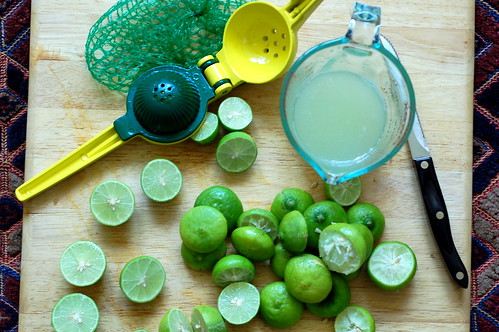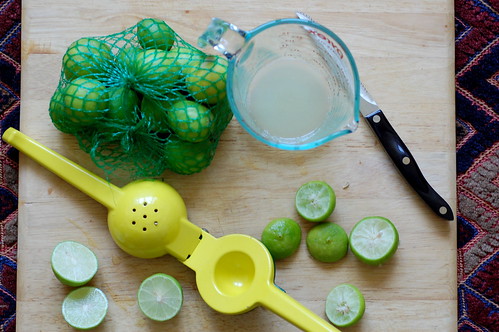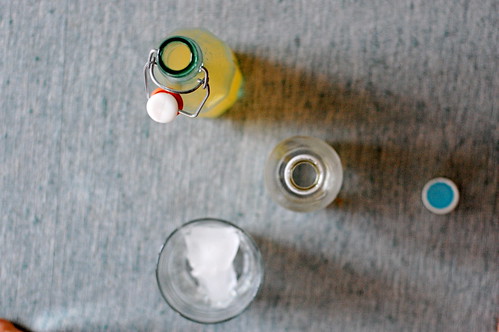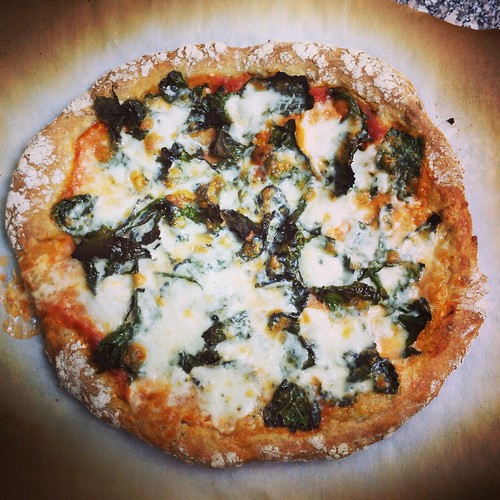
If you've been reading here for a while then you'll know that I like to experiment in baking with different flours. That sometimes results in things like amaranth cookies, rye pie crusts, kamut cake, or semolina cakes, and also a myriad of failures with teff. Recently, I spied some einkorn flour online and did a bit of research about it and decided to experiment a bit with it. So of course I ordered about 10 pounds!
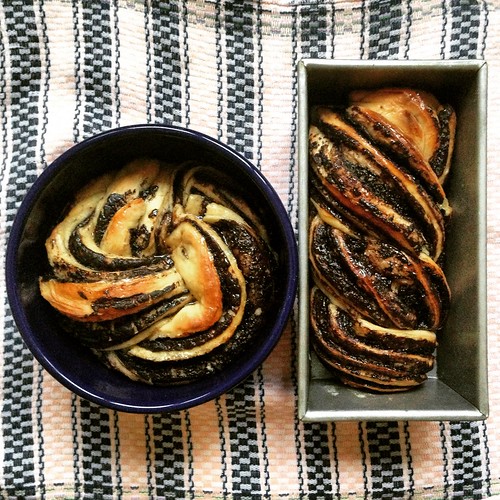
Einkorn berries, and the resulting flour, are essentially a wild wheat. That is, they are a cousin to the same grain your regular all purpose flour is made with, so they're not gluten free or anything, but they have not been cultivated and developed for years like a lot of modern commercial wheat and are supposedly more dense in protein and nutrients. I'm not an expert, but you can read some more here and here. Frankly, for all I know einkorn could be some marketing hoax, but since we make pretty much all of our own baked goods in house, I'm very conscious of just how much flour we consume and I'm always looking for more ways to get variety in our diet.
Einkorn is easier to work with than some exotic flours since it is not unsimilar to regular flour. The key difference is that einkorn is a much softer flour, so it needs less liquid. The texture is a little like cake flour. One of the advantages to this is that you can combine einkorn flour with stronger flours, like dark rye or whole wheat without the resulting dough being heavy or coarse. In the above photo, you can see the Ottolenghi kranz cakes (aka chocolate babka) where I made the dough with half rye/half einkorn mix, which came out wonderfully.
Another thing I really like is making pizza with part einkorn flour. In my quest to find appealing foods during pregnancy, I thought this was a great opportunity to work on my homemade pizza technique. My resulting pizza is based off a recipe from theKitchn, tweaked to work with a part einkorn flour mixture and increased in volume. As homemade pizza goes, we think it's pretty awesome. Some toppings we've enjoyed include roasted kale and mozzarella, salami and red pepper, homemade pesto, and fig and blue cheese. Have any of you tried einkorn flour yet? Let me know!
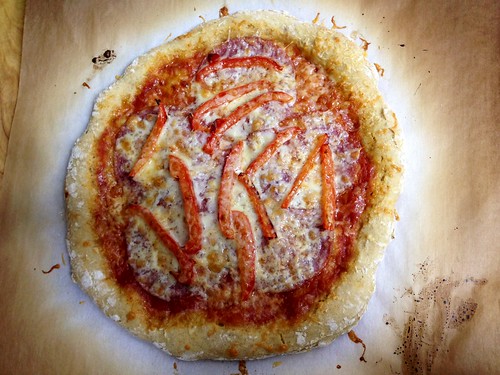
Homemade Pizza
Makes 2 large or 3 medium pizzas. I use parchment paper to transfer my pizzas to the oven. This makes it very easy, but keep in mind that the paper does start to brown/burn around the edges while your pizza is baking. It won't affect the pizza or flavor, but it just looks a little disconcerting. When the pizza is done, it slides right off the parchment and you can just discard it.
1 1/4 teaspoons instant yeast (such as SAF)
1 1/2 cups einkorn flour, plus more for kneading and rolling
1 1/2 cups whole wheat flour (or all purpose flour)
1 1/2 teaspoons salt
3/4 cup warm water, plus more as needed
toppings of choice
parchment paper
1. Place the yeast in a large bowl. Add the salt and the flours and stir with a rubber spatula to combine. Make a well in center of the flour, add in the water, and then gently mix the mixture by stirring with the rubber spatula. If the mixture is dry, add more water, 1 tablespoon at a time, it should not need more than 4 tablespoons additional liquid. (It probably won't be too wet, but if it is, you can add additional einkorn flour.) Once the mixture has come together, turn it onto a surface lightly floured with einkorn flour and knead the mixture until it forms a smooth dough ball. Lightly coat the ball with olive oil, place it back in the bowl, and cover with a damp towel or plastic wrap. Let rise until doubled, about 70-90 minutes.
2. Preheat oven as high as it will go. Place a pizza stone in the oven if using. Prep toppings.
3. Press down the dough and divide it into 2 or 3 pieces, depending on how many pizzas you want. On the same lightly floured surface, press out your dough into a disk and then lay the dough on a piece of parchment paper. Repeat with remaining dough. Top dough with desired toppings.
4. Slide a baking sheet under the parchment paper, transport it to the oven, then slide the pizza on parchment paper onto the pizza stone. Bake pizza for 8-11 minutes, until crust is lightly browned and cheese is bubbling. Remove pizza, slide pizza onto cutting board, discard parchment. Repeat with remaining pizzas.

